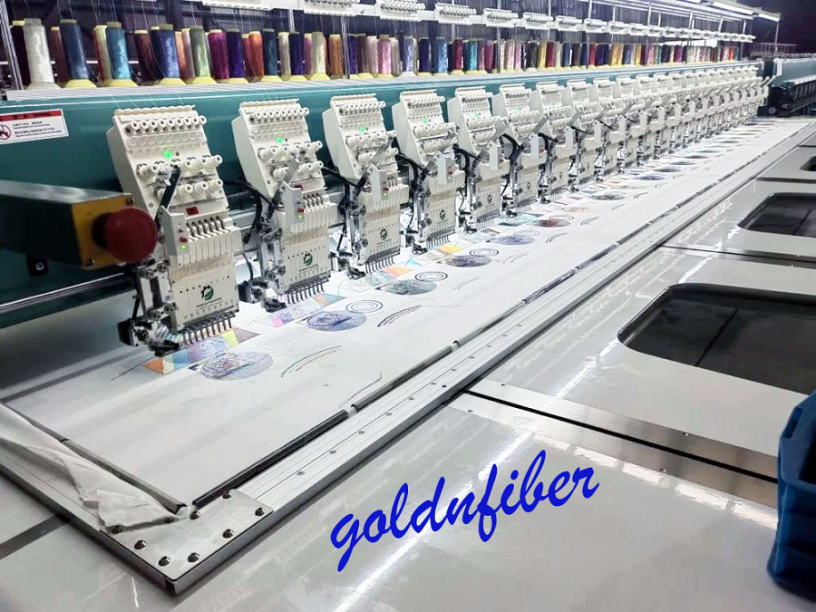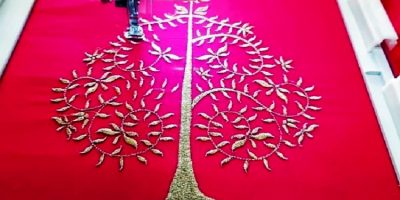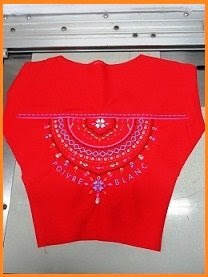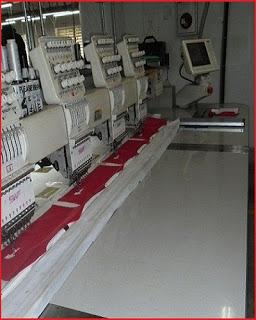Embroidery is not only an art but also a mind-blowing expression of your thoughts. Embroidery is one sort of artistic work, motif, pattern, or a design of figure that consists of recurring shapes or colors, as in architecture or decoration. Thus fashion designer frequently applies attractive embroidery logos onto their design to amplify their image. Embroidery costing is a common issue for garment merchandisers. Some major factors are directly involved with the embroidery costing. A couple of factors like product quality, design size, length, and quantity need to be considered before preparing embroidery costing. Garment merchandisers should have sound ideas regarding the above factors to accomplish embroidery costing smoothly. This knowledge will help them to minimize total garment costs; otherwise, it will be tough to get a maximum profit margin.
Key Factors of Embroidery Costing:
The following key factors directly influenced embroidery costing. So, during embroidery costing, garment merchandisers should follow it also. The affecting factors are:
- Nature of embroidery
- Quantity of stitch
- Time needed to complete a lot
- Place of embroidery.
- Shade of thread
- Any restriction on selection on the embroidery machine or thread.
- Cutting of appliqué (Dice or Laser cutter)
- Lay of embroidery
- Any compliance requirement.
- Resource involves in doing embroidery.
- Any lab test requirement
All the above key factors are discussed below:
- Nature of embroidery:
There are different types of embroidery. It’s another important key factor that should be considered during embroidery costing. Embroidery cost mostly differs from one type to another type. Each embroidery type needed a different amount of cost i.e. Zigzag Stitch embroidery cost is not the same as Motif Stitch embroidery cost.
- Quantity of stitch:
Embroidery cost mostly depends upon the stitch quantity of that design. During costing 12000 stitches is a countable unit for embroidery design. It’s a very important key point that has a great impact on embroidery costing.
- Time needed to complete a lot:
Time is one of the important factors in fixing embroidery costs. Embroidery task times differ from one batch to another batch due to type variations, which directly affect the embroidery cost.
- Place of embroidery:
Embroidery placement directly affects embroidery costing. Some special items like caps, shows, and car seat cover embroidery require special care and more time. At that time embroidery costs may increase simultaneously.
- Shade of thread:
Embroidery design exists in various shades of thread to make it lucrative. The cost of each thread shade is not similar. Embroidery costs ups and downs for different types of thread shade. So garment merchandisers should consider it closely.
- Lay of embroidery:
Embroidery costs ups and downs for the number of embroidery layers. More layers require more time and manpower which will increase embroidery costs. So, merchandiser should cross-check the lay of the embroidery, before confirming of embroidery cost.
- Any restriction on the selection of the embroidery machine or thread:
Sometimes buyers directly mentioned the embroidery machine’s name. Because all embroidery machine prices and performance are not equal. Buyers may prefer one of them. Collecting that embroidery machine requires more money. Besides this, sometimes buyers may give sanctions on to use of raw materials of a particular company or country. Material procurement may be hampered for that reason. Embroidery costs need to increase due to a shortage of raw materials.
- Cutting of appliqué (Dice or Laser cutter):
Embroidery costs may increase if using appliqué with embroidery. Appliqué has to cut dice or leaser which increases cost.
- Any lab test requirement:
If the buyer suggests doing any special lab test for embroidery that time embroidery cost may increase.
- Any compliance requirement:
If the buyer provides special instructions to accomplish the embroidery task at that time embroidery cost needs to be increased.
- Resource involves in doing embroidery:
Doing embroidery requires some additional materials like bobbin thread, interning, TC fabric etc. For those materials need to add some penny to the cost sheet.
Let’s Calculate the Cost of Embroidery in Garments
Now we are going to teach you how to calculate the cost of embroidery. Embroidery factories consider 12000 stitches to be a common unit for costing but it may not be accepted all the time. Sometimes factory counts the total time required for adding Applique, Patch, Wording a combination of work to complete one batch.
We need to consider the following information first and count some parameters for calculating the price of embroidery
12000 Stitch = 1 unit in embroidery
Suppose,
1) JWS Logo Design stitch quantity = 13000
2) Rate of per unit. (It may vary depending on the design type and the availability of the factory). Normally it will be about $0.25/unit.
We can calculate it per dozen. (Stitch qty X 12 / 12000)
Formula = (Stitch quantity X 12) / 12000 X Rate per unit
= 13000 X 12 / 12000 X $0.25
= 156000 / 12000 X $0.25
= 13 X $0.25
= $3.25/dozen
For this particular embroidery design cost would be $3.25/dozen (W/out raw materials). But if buyer insist you to provide embroidery materials that time you can add $0.03 (to collect bobbin thread, interning, TC fabric etc) for material procurement as per following excel file.
Anyway, the embroidery rate per unit is not always fixed. It could be changed depending on the embroidery design, category, and practical situations.
Here I have attached an embroidery cost format for your reference. You will get clear idea if analyze the excel file. Please click the following Google Drive link to be clearer.
You may like Different types of embroidery stitches and their features




